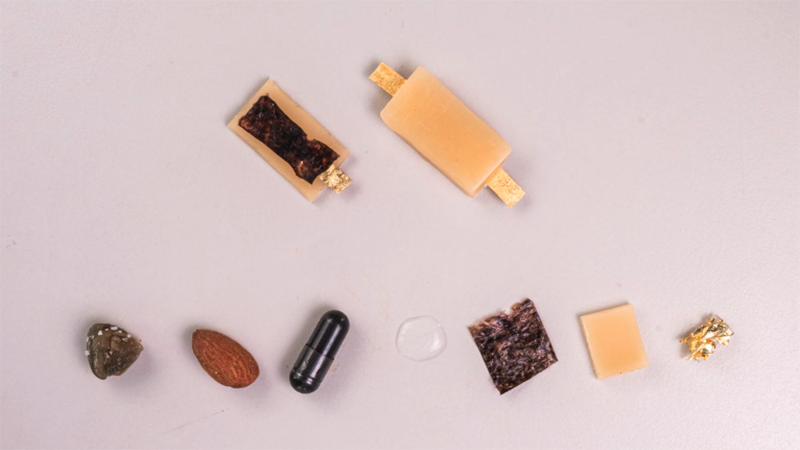From food to technology, a new battery emerges as a game-changer for soft robotics and biomedical applications. The secret? It’s all food-made.
Fruit’s capacity to charge devices has long been discussed, but making batteries from food is freshly new. A group of Italian researchers from the Italian Institute of Technology (IIT) has unveiled an edible and rechargeable battery using materials commonly found in foods. The breakthrough unleashes new possibilities for soft robotics and biomedical engineering.
Inspired by biochemical reactions in living organisms, researchers have developed a proof-of-concept battery using natural ingredients. The battery consists of anode and cathode electrodes separated by a nori seaweed separator to prevent short circuits.
Riboflavin (vitamin B2) from foods like almonds serves as the anode, while quercetin from capers acts as the cathode. The electrodes are enclosed in beeswax, and food-grade gold contacts ensure connectivity.

The ultra-low-power edible battery is safe for ingestion and offers a current of 48μA for 12 minutes or longer, making it ideal for powering small electronic devices like low-power LEDs.
Mario Caironi, the research coordinator, states the battery opens up new possibilities in the field of edible electronics, from circuits and health sensors to food storage monitoring. Future applications include children’s toys and edible soft robots as efforts continue to improve its capacity and size.
Co-author Ivan Ilic emphasizes the significance of this edible battery in the energy storage field, highlighting its use of safer materials than conventional lithium-ion batteries.
While it may not be suitable for electric cars, it catalyzes the development of safer battery technologies. The researchers hope that their work will inspire other scientists to pursue the creation of sustainable and secure batteries for the future.
The applications of this edible battery extend to biomedical devices that can aid in diagnosing and treating gastrointestinal tract diseases. The field of edible electronics is rapidly evolving, with other fascinating projects emerging, such as developing an edible drone with rice cake wings. These innovations promise to address critical challenges and deliver innovative solutions across various domains.
Article Source: Institution of Mechanical Engineers
Image Source: IIT-Italian Institute of Technology
Cover Photo by Kostas Bosinas on Unsplash






